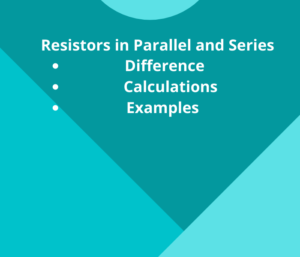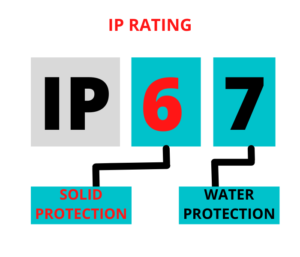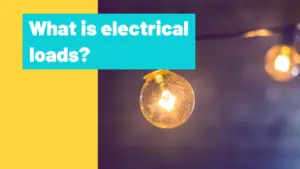Electrical appliances have become an integral part of modern life, and they often need to be connected to power sources to function.
One common way of connecting appliances is through a parallel connection, which allows multiple devices to operate independently while sharing the same power source.
Electrical appliances are connected in parallel to ensure that they receive the same voltage and remain operational even if one appliance fails.
Parallel connections provide an efficient and reliable way to connect multiple appliances to a single power source.
They also allow for individual control of each device and increased redundancy and reliability in the electrical system.
In this article, we will explore the advantages of parallel connections for electrical appliances, the safety considerations that must be taken into account, and how to connect appliances in parallel.
Table of Contents
Advantages of Connecting Electrical Appliances in Parallel
There are several advantages to connecting electrical appliances in parallel, including increased voltage stability, power availability, individual control of appliances, and redundancy and reliability.
Increased Voltage Stability:
When appliances are connected in parallel, each device receives the same voltage regardless of how many other devices are connected.
This means that even if one device fails, the voltage supplied to the other appliances will remain constant.
This is because each device is connected directly to the power source, which ensures that the voltage supplied to each device remains the same.
Increased Power Availability:
Parallel connections allow multiple devices to share the same power source, which means that more devices can be powered simultaneously.
This is especially useful in situations where power is limited, such as in a home with a limited number of electrical outlets or during power outages.
Individual Control of Appliances:
Parallel connections also allow for individual control of each device, which means that each device can be turned on or off independently of the other devices.
This is useful for appliances that do not need to be on all the time or that need to be turned on at different times.
Redundancy and Reliability:
Parallel connections provide redundancy and reliability because if one device fails, the others can continue to operate.
This is because each device is connected directly to the power source, which ensures that the voltage supplied to each device remains the same, even if one device fails.
Electrical Safety Considerations for Parallel Connections
While there are many advantages to connecting electrical appliances in parallel, there are also some safety considerations that must be taken into account.
These include the risks of overloading and overheating, the need for fuses and breakers, and grounding and electrocution hazards.
Overloading and Overheating:
Parallel connections can be susceptible to overloading and overheating if too many devices are connected to the same power source.
This can cause damage to the appliances and create a fire hazard. To prevent overloading and overheating, it is important to ensure that the total power consumption of all the devices connected in parallel does not exceed the capacity of the power source.
For more information about circuit overloading read my article on my other site, safetyfrenzy, The Dangers of Overloading Electrical Circuits: Can it Cause a Fire?
Fuse and Breaker Requirements:
To prevent overloading and overheating, it is important to use fuses and breakers to protect the electrical system.
Fuses and breakers are designed to break the circuit in the event of an overload or short circuit, which helps to prevent damage to the appliances and minimize the risk of fire.
Grounding and Electrocution Hazards:
Parallel connections can also pose a risk of electrocution if proper grounding is not established. Grounding provides a safe path for electricity to flow in the event of a fault or short circuit, which helps to protect people and appliances from electric shock.
It is important to ensure that all appliances connected in parallel are properly grounded to minimize the risk of electrocution.
How to Connect Electrical Appliances in Parallel
Connecting electrical appliances in parallel can be done using a few simple steps:
- Determine the power requirements of each device: Before connecting appliances in parallel, it is important to determine the power requirements of each device. This includes the voltage and current requirements, which will help to ensure that the devices are connected safely and efficiently.
- Use appropriate wiring: Once the power requirements have been determined, it is important to use appropriate wiring for the appliances. This includes using wires that are the appropriate gauge and type for the voltage and current requirements of the appliances.
- Connect the appliances in parallel: To connect appliances in parallel, simply connect the positive terminals of each device to the positive terminal of the power source and the negative terminals of each device to the negative terminal of the power source.
- Install fuses and breakers: To protect the electrical system from overloading and overheating, it is important to install fuses and breakers in the circuit. Fuses and breakers are designed to break the circuit in the event of an overload or short circuit, which helps to prevent damage to the appliances and minimize the risk of fire.
Examples of Parallel Connections in Electrical Appliances
Parallel connections are commonly used in a wide range of electrical appliances, including household circuits and wiring, Lights and decorations, automotive electronics, and computer networking equipment.
- Household Circuits and Wiring:
Homes use parallel connections to power appliances and devices. This includes using parallel circuits for lighting, outlets, and major appliances such as refrigerators, washers, and dryers.
- Lights and Decorations:
Lights and decorations are often connected in parallel to allow for individual control of each device.
This allows for different patterns and sequences of lights to be created while ensuring that the voltage remains constant across all the lights.
- Automotive Electronics:
Automotive electronics are often connected in parallel to allow for multiple devices to be powered by the same battery. This includes devices such as GPS systems, entertainment systems, and charging ports.
- Computer Networking Equipment:
Computer networking equipment is often connected in parallel to allow for multiple devices to be connected to the same network. This includes devices such as routers, switches, and hubs.
Conclusion
In conclusion, parallel connections are an efficient and reliable way to connect electrical appliances to power sources.
They provide increased voltage stability, power availability, individual control of appliances, and redundancy and reliability.
However, it is important to take into account the safety considerations of overloading and overheating, fuse and breaker requirements, and grounding and electrocution hazards.
By following the proper procedures for connecting appliances in parallel, we can ensure that our electrical systems remain safe and functional.
Don’t Leave Empty-Handed!
Install my Free Android App on Google Play:
Electrical Cables Most Common Tables “Cables Tables”
And, my Electrical Calculations App “Fast Electrical Calculator”
Discover more great content by subscribing to My channel
Looking to stay ahead of the game in the world of electrical engineering? Subscribe to my YouTube channel and gain access to exclusive content you won’t find anywhere else!
The staff I recommend
(Amazon Affiliate Links to products I believe are high quality):
- Economy 120 Volt/60Hz AC Power Source – Step-Down Voltage & Frequency Converters 1800W
- UNI-T Digital Multimeter Tester UT139C
- 50-Amp Extension Cord for RV “100ft”
- Voltage Stabilizer 110/220v
- Hair Dryer “best selling“
- TOSHIBA EM131A5C-BS Countertop Microwave Ovens
Disclaimer: This contains affiliate links to Amazon products. I may earn a commission for purchases made through these links.



